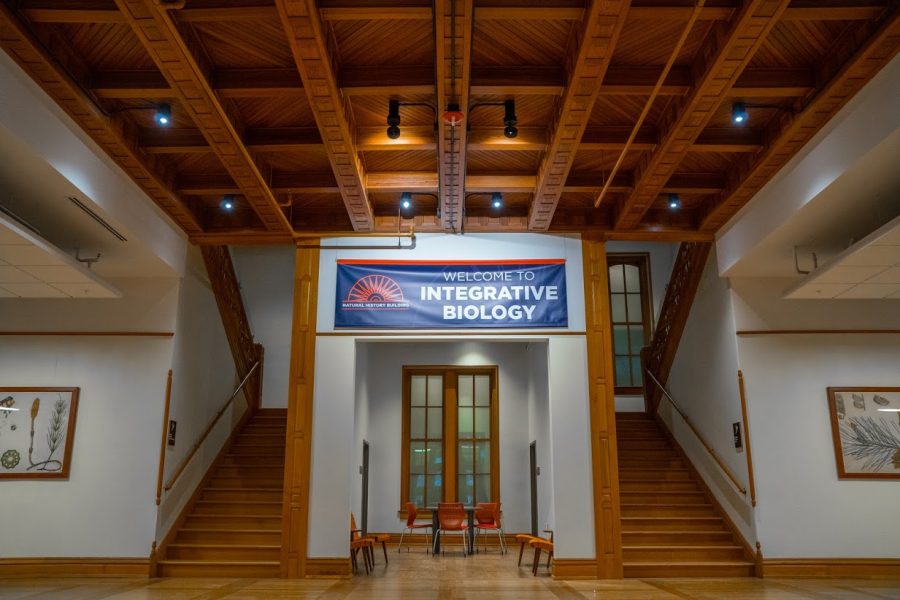Natural History Building achieves LEED gold status
The Natural History Building, located at 1301 W. Green St., Urbana, was awarded a LEED Gold certification for its sustainable structure and reuse of old materials in its renovations.
Feb 18, 2019
The newly renovated Natural History Building is a common site for campus tours and department meetings. According to Stephen Marshak, professor emeritus of geology, that wasn’t always the case.
“Prior to the renovation, the building was in complete disarray,” Marshak said.
Paint peeled, lights fell and labs suffered in a building without modern plumbing, central air conditioning or insulation. This, combined with a fire in 1990 which threatened the flooring’s structural integrity, made the 2014 upgrade a campus necessity.
Natural History Building becomes 16th LEED certified building
Uploaded by The Daily Illini on 2019-02-17.
Get The Daily Illini in your inbox!
Though the three-year, $79 million renovation began due to structural issues, a sustainable re-vamp was still a primary concern for faculty in the Natural History Building, which would contain all departments of the School of Earth, Society, and Environment once the renovation was completed.
“The Natural History Building was a priority building for sustainability because it houses multiple sustainability-focused academic units,” said Mohamed Attalla, the University’s executive director of Facilities & Services, in an email.
The project exceeded state sustainability requirements; Illinois mandates Leadership in Energy and Environmental Design silver classifications for renovations above 10,000 square feet, but the Natural History Building’s features earned it a LEED Gold certification.
The U.S. Green Building Council scores buildings on a 110-point scale of sustainable design categories. Attalla cites the renovation’s “air-to-air energy recovery, a manifolded fume hood exhaust, variable flow heating and cooling systems (and) energy efficient windows” as its main energy-saving features. However, the lion’s share of LEED points came from other elements of the renovation.
“Wood was taken out, saved and put into the Core,” Marshak said of the building’s main student lounge. “That’s part of why we have the LEED classification: we recycled a lot of things.”
The Natural History Building renovation was awarded points for reusing materials from its original walls, floors and roof. High marks in “Water Efficiency” and “Sustainable Sites” because of public transportation access pushed the Natural History Building over the 60-point benchmark needed for a Gold certification.
Renovations finished in fall 2017, but LEED certification was awarded in January 2019. LAS Director of Facilities & Services Derek Fultz said buildings must back up sustainability claims before a certification is awarded.
Fultz’s comments reflect the University’s commitment to combating climate change. The Natural History Building is the 16th LEED-certified building on campus, with Altgeld Hall, Davenport Hall and Illini Hall renovations in the planning phase.
Fultz said the return for these projects is over the next 50 to 100 years. As the University pledges carbon neutrality by 2050, campus officials hope progress continues.
“The LEED certification process functions through commissioning work; that’s when you go through and verify that systems do what they say they’ll do,” Fultz said. “LEED adds some complications to the projects, but we believe, as a community, it is important to do.”






